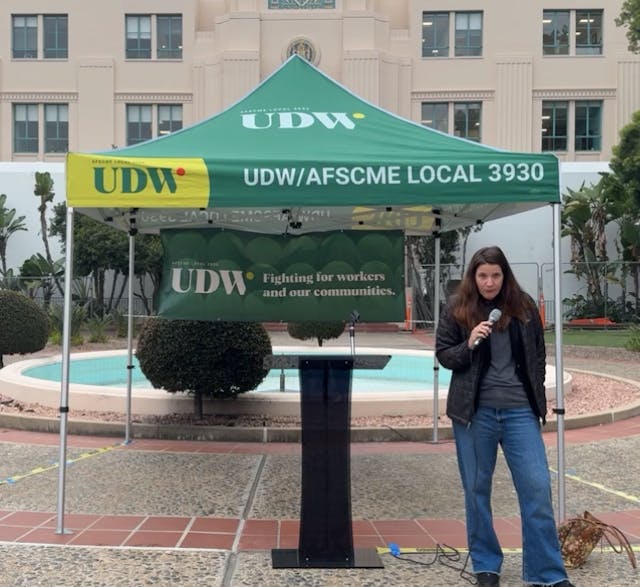Who Killed the Capo?
Frontera NorteSur
Celebrating his 63rd birthday, “retired” Mexican drug trafficker Francisco Rafael Arellano Felix was enjoying friends, family and the fun-loving company of the Mexican farandula, or entertainment set. Held at the Marbella Hotel in the popular international tourist destination of Los Cabos, Baja California Sur, a resort long promoted as an island of safety in a sea of insecurity, the party drew about 100 guests.
The attendees included onetime Mexican soccer star Jared Borgetti, boxer Omar Chavez, son of the legendary slugger Julio Cesar Chavez; and Luis Antonio “El Mimoso” Lopez, ex-singer of the famous El Recodo Band, who entertained the crowd. Photos of the bash later published in the Mexican press showed a jovial time, as the big birthday boy variously flashed U.S.-style gang signs with aging friends, posed alongside bikini-clad women and stood together with sporting legend Borgetti.
The October 18 Los Cabos party was also crashed by an uninvited guest: a clown who strolled into the festivities without the slightest interference.
As the evening wore on, and the booze likely sunk in, the clown suddenly appeared from nowhere, walked up to Arellano Felix and proceeded to shoot the old capo five times in the head with a Belgian-made “police killer” pistol. Present for the assassination were Arellano Felix’s wife, 1990 Mazatlan Carnival Queen Rocio del Carmen Lizarraga Lizarraga; the couple’s 12-year-old daughter; and two sons from a previous union.
Amid the shock and hurried scatter of guests, the killer clown made an escape in a waiting SUV with the assistance of at least two accomplices.
Last month’s assassination eliminated the oldest brother of the family that founded the Tijuana Cartel, or Arellano Felix Organization (AFO), considered at one time the most powerful drug organization in Mexico and possessing a non-stop cocaine pipeline that ran from the steamy jungles of South America into the eager noses, pipes and veins of the United States and beyond.
Like other empire-builders, the AFO accumulated monuments to their wealth and influence: swank San Diego area homes, a pyramid-style nightclub in Ciudad Juarez situated next door to the federal attorney general’s offices, the Playa Mar Oasis Resort in Rosarito, Baja California, and the half-finished hotel on the beach of Puerto Vallarta. The ex-operator of the fashionable Frankie Oh disco in Mazatlan back in the day, Rafael added to the flash by publishing newspaper statements proclaiming his faith in God and prowess as a businessman.
Years later, the fateful Los Cabos celebration recalled the scene that drew public attention when drug dealer Jose Jorge Balderas Garza, or “JJ,” shot and seriously wounded soccer star Salvador Cabanas in a Mexico City nightclub in early 2010. The shooting at the popular “Bar-Bar” club cast a spotlight on the regular hobnobbing that went on between gangsters, sporting figures and Televisa network personalities.
Rising to power after the 1980s, the AFO established a virtual fiefdom in Baja California, vying with other cartels for control of Sinaloa, Chihuahua and other states. Francisco Rafael and his brothers were linked to some of the more violent episodes that marked the rise of the narco in Mexico, including the bloody 1992 shootout at a Puerto Vallarta disco with Joaquin “Chapo” Guzman and the killing of Cardinal Jesus Posadas Ocampo in the Guadalajara airport a year later, an incident officially tied to the conflict with Chapo Guzman but still an unsettled affair in the view of many Mexicans.
Tapping into cross- border reserves, the AFO employed California gangbangers in its Mexico street battles.
In the 21 st century, the AFO fell on harder times. Ramon Arellano Felix was killed in a 2002 Mazatlan shootout reminiscent of an Old West gunfight, while brothers Benjamin, Javier and Eduardo were arrested, extradited and locked away in the United States.
The blows have prompted some U.S. and Mexican authorities to periodically pronounce the transnational crime group all but finished. More sober assessments, however, insist that the organization persists, possibly with sister Enedina Arellano Felix and her son Fernando Sanchez Arellano at the helm.
Since his 2008 release from U.S. custody, Rafael was said to have lived a quiet life in a middle class section of Los Cabos with a precious ocean view. Using the name Mauro Vazquez, he reportedly presented himself as a musical producer. The veteran gangster was also known to be a motorcycle enthusiast with a penchant for the Harley Davidson brand.
Rafael’s assassination came at a delicate and strategic moment. Less than two weeks before the murder, so-called narco banners threatening local police were draped across Tijuana. Signed by the “United Groups of the New Tijuana Cartel,” the messages also reportedly contained the signatures of “Don Balas,” a man linked to the AFO, and “El Atlante,” a figure associated with narcomenudeo, or street-level drug dealing.
Local officials downplayed the narco-banners. While Tijuana Mayor Carlos Busta-mante attributed the public threats to police confiscations of contraband, the city’s public safety chief scoffed at the claims of the banner writers. “I will categorically say that there is no veracity to the existence of a new cartel,” said Alberto Capella Ibarra.
Yet, like the narco-banners of the United Cartels that declared all-out war against the Zetas in early 2011, the Tijuana banners previewed blood on the tracks.
The banners were unfurled during a time of political transition, occurring in the switch-over from the administration of the outgoing governor, Jose Osuna Millan, to the new one headed by Francisco “Kiko” Vega de Lamadrid. Both men are members of the National Action Party.
In Mexico, local and state political transitions, even of the same political party, are typically characterized by shake-ups in law enforcement ranks and the reshuffling of department heads for agencies in charge of business and construction permits, public works, tourism, and other money-making opportunities.
Within a day of Rafael Arellano Felix’s murder, Mexican federal police detained 70-year-old Manuel “El Caballo” Aguirre Galindo in Mexico City. Aguirre was reputedly the historic money-laundering chief of the AFO, and a fugitive for the past 20 years.
U.S. authorities had posted a $2 million reward for his arrest.
Although Aguirre’s family claimed that their relative was arrested on October 19, Mexican law enforcement did not announce the detention until the following week. In the interim, Aguirre’s relatives filed court injunctions that contended the elderly man was being held incommunicado.
The circumstances of Aguirre’s arrest and Arellano Felix’s murder merit some discussion. Although he was a wanted man, Aguirre was nabbed while dining casually in a restaurant located in Lomas de Chapultepec, the ritzy Mexico City neighborhood inhabited by the country’s elite. Arellano Felix was throwing a party attended by celebrities but with no visible security or even bodyguards present. The soon-to-be victim was either so confident of his safety in Los Cabos that he didn’t give security a second thought, or he was betrayed from within his own circle and security purposefully relaxed to allow the assassin a free hand.
Ironically, the Los Cabos hit happened six days before Arellano Felix’s real birthday, October 24, but the celebration was held nearly a week prior because of reported event scheduling issues at the Marbella.
Both the murdered capo and his old associate had multiple run-ins with Mexican and U.S. law enforcement. Despite a long-running and hefty reward offered by the U.S. government, federal officials suddenly dropped the case against Aguirre last week.
“Given the passage of time, the U.S. confronts challenges that evidence and witnesses can’t clarify,” said Laura Duffy, U.S. prosecutor for the southern California border region.
Twice jailed in the U.S., Rafael Arellano Felix ultimately served less than two years of a seven-year sentence in prison before he was deported to Mexico in 2008. Brian White, Arellano Felix’s lawyer, credited the early release to a good prison behavior record. The relatively light jail time contrasts with the lengthy or life sentences in maximum security facilities slapped on other Mexican capos extradited to the U.S., including Rafael’s own brothers.
Speculation swirls around the motive of Arellano Felix’s murder. Was it over an old money debt or trail? According to different accounts, Rafael’s specialty in the AFO was moving cash and greasing the wheels of business relationships.
Possible authors of the killing mentioned include historic rival Chapo Guzman and other drug business competitors. Then there are the relatives of hundreds if not thousands of people killed by the AFO who could be thirsting for revenge.
And at a time when old skeletons are rattling around the closet, Arellano Felix’s first-hand knowledge of the state-narco power structure also deserves a look. Less discussed, at least so far, is the national and international context in which the assassination of one old narco and the detention of a second one transpired.
The release of legendary drug lord Rafael Caro Quintero from a Mexican prison this fall, quickly followed by U.S. and press stories quoting two former U.S. Drug Enforcement Administration (DEA) agents and an ex-CIA contract pilot claiming CIA operatives were present during the 1985 torture/interrogation of Enrique Camarena, a crime for which Caro Quintero faces extradition to the U.S., reopened the book on the murky underworld of drug traffickers connected to the Arellano Felix family, U.S. Cold War warriors and Mexican security officials who came together during the Iran-Contra era.
As the Mexican press continues digging deeper into this story, Caro Quintero has apparently vanished from sight.
Revelations of longtime NSA spying on the Mexican government, as well as continued reports on the CIA’s close relationship with a now-defunct Mexican security agency known for its profitable supervision of the drug business, add other elements to a simmering mega-scandal that, given the right political combustion, could burst into flames. In this scenario, possible loose cannons are not at all convenient.
Whatever the reason for Arellano Felix’s murder, the crime is not a priority for Mexico City. Although there is strong reason to presume that the professionally-staged killing had more to do with Rafael’s narco background than with his life as a semi-retired family man, the murder has been classified as a “common” crime prosecutable by the state government and not the feds. Consequently, the murder case was dropped on the lap of the new Baja California state attorney general who took office last week.
Frontera NorteSur: on-line, U.S.-Mexico border news Center for Latin American and Border Studies New Mexico State University Las Cruces, New Mexico



 Arturo Castañares
Arturo Castañares


